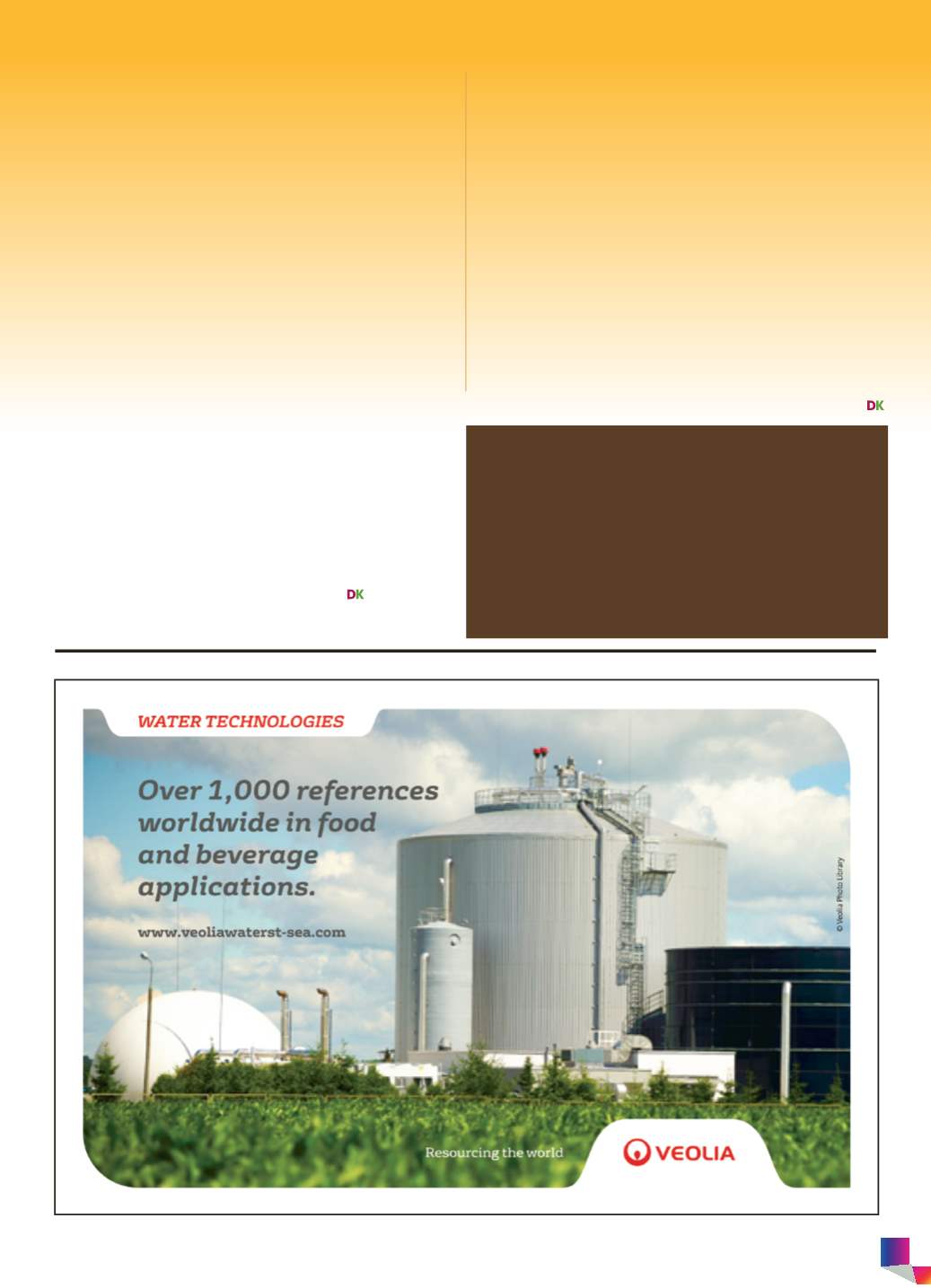
DRINKING SUPPLEMENT
BEVTEC ASIA EDITION
21
แหล่
งที่
มา/Source
ACS News Service Weekly PressPac: January 28, 2015, Beer compound could help fend
off Alzheimer’s and Parkinson’s diseases.
Press release from press office, Newcastle University, UK. Beer and Bread Yeast-eating
Bacteria Aid Human Health.
/
ข้
อมู
ลเพิ่
มเติ
ม/Additional Information
1
The research team consisted of: The Institute for Cell and Molecular Biosciences at
Newcastle University, the Complex Carbohydrate Research Centre at the University of
Georgia, the Department of Microbiology and Immunology at the University of Michigan
Medical School, the Department of Chemistry at the University of York, the School of
Chemistry and Bio21 Molecular Science and Biotechnology Institute at the University of
Melbourne, the Department of Pharmaceutical Chemistry at the University of Kansas
School of Pharmacy, Oxyrane, Ghent, Agriculture and Agri-Food Canada, Biochemistry
and Microbiology, University of Victoria, Canada and the USDA, Agricultural Research
Service, National Laboratory for Agriculture and the Environment, Iowa.
การศึ
กษาซึ่
งนำที
มโดยศาสตราจารย์
แฮร์
รี่
กิ
ลเบิ
ร์
ต แห่
งมหาวิ
ทยาลั
ย
นิ
วคาสเซิ
ล ศาสตราจารย์
เอริ
ค มาร์
เทนส์
แห่
งมหาวิ
ทยาลั
ยมิ
ชิ
แกน และ
ดร.เวด แอ็
บบ็
อท แห่
งกระทรวงเกษตรและอาหาร ประเทศแคนาดา ได้
ระบุ
ถึ
งกลไกอั
นซั
บซ้
อนในการสลายกำแพงผนั
งเซลล์
คาร์
โบไฮเดรตของยี
สต์
ซึ่
งช่
วยให้
เข้
าใจถึ
งความสามารถของแบคที
เรี
ยในลำไส้
ของมนุ
ษย์
หรื
อ
Microbiome ในการรั
บสารอาหารจากอาหารหลากหลายชนิ
ดที่
มนุ
ษย์
เรา
บริ
โภคเข้
าไป
การวิ
จั
ยต่
อเนื่
องโดยนั
กวิ
ทยาศาสตร์
จากนิ
วคาสเซิ
ล ออสเตรเลี
ย
แคนาดา สหรั
ฐอเมริ
กา และเบลเยี่
ยม ยั
งช่
วยคลายปมกลไกของเชื้
อ
Bacteroides thetaiotaomicron
ซึ่
งมี
อยู่
จำนวนมากในลำไส้
ของมนุ
ษย์
โดยเชื้
อเหล่
านี้
เรี
ยนรู้
ที่
จะเอาตั
วรอดโดยย่
อยสลายคาร์
โบไฮเดรตเชิ
งซ้
อน
ที่
เรี
ยกว่
า Mannan ในยี
สต์
ซึ่
งนั
บเป็
นกระบวนการที่
มี
ความซั
บซ้
อนที
เดี
ยว
Mannans ได้
จากผนั
งเซลล์
ของยี
สต์
โดยเป็
นส่
วนประกอบสำคั
ญ
ในอาหารที่
มนุ
ษย์
เราบริ
โภคเข้
าไป โดยเฉพาะในอาหารประเภทหมั
กดอง
เช่
น ขนมปั
ง เบี
ยร์
ไวน์
และซอสถั่
วเหลื
อง เป็
นต้
น
เป็
นที่
คาดกั
นว่
างานวิ
จั
ยครั้
งนี้
จะช่
วยให้
เข้
าใจถึ
งกลไกในการรั
บ
สารอาหารของเชื้
อจุ
ลิ
นทรี
ย์
ในลำไส้
ของมนุ
ษย์
ซึ่
งอาศั
ยอยู่
ในสิ่
งแวดล้
อมที่
มี
ความจำเพาะได้
อย่
างมี
ประสิ
ทธิ
ภาพมากขึ้
น อั
นที่
จริ
งแล้
ว เชื้
อ
Bacteroides
thetaiotaomicron
ผ่
านการอนุ
มั
ติ
จากองค์
การอาหารและยา สหรั
ฐอเมริ
กา
เพื่
อใช้
ในการรั
กษาโรคที่
พบได้
ยาก เช่
น โรคลำไส้
อั
กเสบในเด็
ก (Paediatric
Crohn’s disease) ดั
งนั้
น Mannans ในผนั
งเซลล์
ของยี
สต์
ก็
อาจมี
ผล
ในการส่
งเสริ
มสุ
ขภาพของมนุ
ษย์
โดยช่
วยกระตุ้
นการเจริ
ญเติ
บโตของเชื้
อ
Bacteroides thetaiotaomicron
ในลำไส้
มนุ
ษย์
นั่
นเอง
The study, led by Professor Harry Gilbert at Newcastle University,
Professor Eric Martens, of the University of Michigan, and Dr Wade
Abbott of Agriculture andAgri-Food Canada, has identified the complex
machinery that targets yeast carbohydrates. This has provided a better
understanding of how our unique intestinal soup of bacteria - termed
the microbiome - has the capacity to obtain nutrients from our highly
varied diet.
The research involving scientists from Newcastle, Australia,
Canada, USA and Belgium has unraveled the mechanism by which
Bt, a dominant member of the human microbiome, has learned to
feast upon difficult to breakdown complex carbohydrates called yeast
mannans.
Mannans, derived from the yeast cell wall, are a component in
our diet from fermented foods including bread, beer, wine and soy
sauce.
It is hoped the research could aid a better understanding of how to
provide nutrients to specific organisms in the microbiome -the collective
genomes of the microorganisms that reside in an environmental niche.
Indeed, given that Bt has been granted Orphan Designation by the
FDA for Paediatric Crohn’s Disease, yeast mannan may have health
promoting effects on the microbiome by stimulating the growth of Bt.


